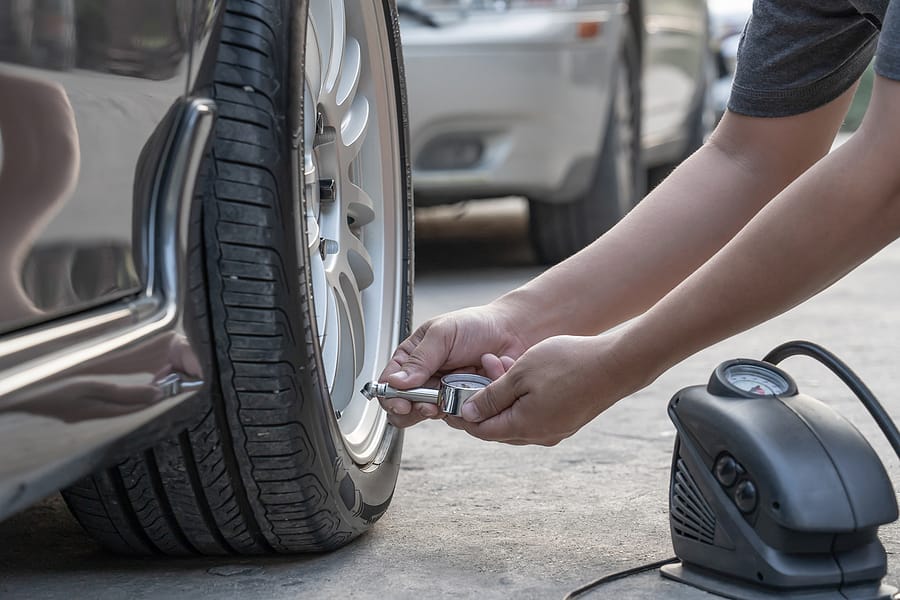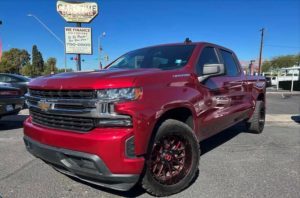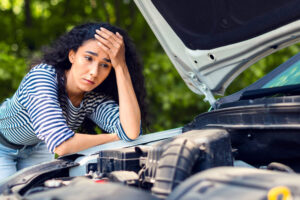When new car prices are going through the roof, it makes sense to maintain your vehicle for a long, reliable life. While vehicle manufacturers recommend specific maintenance tasks at prescribed intervals, no one says you can’t do it yourself. Modern cars and trucks even prompt drivers with maintenance reminders to keep things on track. To simplify DIY car maintenance, we’ve compiled the top tips to keep vehicles on the road longer.
1. Don’t Ignore the Maintenance Required Light
Basic services like oil changes, filter replacement, and others follow a maintenance schedule based on mileage. A typical interval for many vehicle maintenance tasks is every 5,000 miles. A “maintenance required” alert is a simple car maintenance indicator that keeps drivers on schedule. When it’s almost time for scheduled services, the maintenance required light will flash when you start your car. Once the vehicle hits the 5,000-mile mark, the alert light will stay on until the service is completed.
IMPORTANT: Know that a maintenance alert differs from the check engine light (CEL). If the CEL comes on, it indicates a failing component or system that could require a trip to your mechanic.
2. Inspect Your Tires
Basic auto maintenance doesn’t get much more basic than checking a vehicle’s tire pressure, yet it’s often overlooked. Checking tire pressure is one of the most critical items on your DIY service checklist because properly inflated tires are essential for safe driving. Underinflated tires can negatively impact stopping distance and handling and are more prone to blowouts. Rough ride quality, diminished hauling capacity, and uneven tread wear are other issues caused by low tire pressure.
The car or truck manufacturer’s recommended tire pressures are printed on the driver-side front door jamb sticker. Note that there can be different recommended tire pressures for high-speed driving, heavy hauling, or towing. Ensure you don’t inflate your tires to the pressure listed on the sidewall of the tire. This figure is the tire’s maximum pressure and is typically much higher than the recommended tire pressure. Check your tires weekly for correct air pressure and wear and tear.
3. Check Your Oil and Fluids
Another easy vehicle maintenance tip is to check your car’s fluids. Regularly checking vehicle fluid levels is vital for preventing damage to your engine, transmission, and other components. All you need is some paper towels and possibly a flashlight. Here are key points for proper fluid inspection and maintenance.
- Only check fluid levels when the vehicle is on level ground.
- Avoid overfilling fluids because excess fluid can lead to decreased performance or damage.
- Wipe the areas around reservoir caps and dipsticks before checking fluids to keep out debris and other contaminants.
- Fluids that need frequent topping off indicate a leak or other issue that should be checked by a mechanic.
Engine oil, transmission fluid, coolant, brake fluid, power steering fluid, and windshield washing solution are easy to check and top off. Always use the vehicle manufacturer’s recommended fluids and filters to ensure your DIY car maintenance produces the best results.
4. Give Your Car Battery a Checkup
DIY car servicing is all about preventive maintenance and is especially needed for batteries. When a battery warning light illuminates, the problem may be with the electrical system or the vehicle battery. Deteriorating battery cables, damaged belts, and faulty alternators are some of the most common culprits. If you get a battery warning while driving, don’t pull over, or you could risk getting stranded. Drive to your mechanic or home if you want to perform some DIY car maintenance.
First, remove any corrosion with baking soda and a toothbrush to check your car battery’s health. Then, ensure the cables aren’t damaged or loose. Tightening the battery cables and cleaning off the terminals may fix the issue. If not, consider using a voltmeter. A voltmeter is a simple car maintenance tool that’s easy to use to test your battery. A full charge reads between 12.2 and 12.6 volts—anything less means the battery likely needs to be charged.
5. Diagnose Like a Pro—Without the Cost
A voltmeter is an inexpensive and helpful tool for every backyard mechanic, but an OBD2 scanner takes do-it-yourself car maintenance to the next level. OBD2 units are vehicle computer system scanners that detect faults and diagnostic codes when connected to your vehicle. While professional mechanics rely on complex and often expensive scanners, many inexpensive basic handheld units are available.
Check your owner’s manual for the location of the OBD2 scanner connection for your vehicle. The connection is a trapezoid shape, often located in the center console or near the driver’s side. It only connects one way, so there’s no danger of getting it wrong. Here’s how to use the scanner for simple car maintenance.
- Connect the OBD2 scanner to the diagnostic connection in your vehicle.
- Turn the ignition to the auxiliary or on position without starting the car.
- The OBD2 unit will scan your systems and identify the issues.
- Once the scan is completed, the scanner may prompt you to scroll through the codes.
It’s important to know that diagnostic codes don’t typically provide detailed information about a specific problem. Instead, they get you headed in the right direction so you can get to the root of the issue. There are many DIY car maintenance resources on YouTube and other platforms that break down typical codes, identify likely suspects, and offer repair advice.
Car Time Supercenter: Tucson’s Used Car Experts
With a bit of know-how and a few tools, learning about car maintenance you can do yourself is good for your car and your bank account. These DIY car maintenance tips can save you significant money when you skip the dealership service department. Plus, you potentially avoid costly repairs down the road. Whether you use our handy car guides or shop our extensive inventory of dependable used cars, Car Time Supercenter keeps Tucson on the road.

There are good reasons people will buy their next used car in Tucson from Car Time Supercenter. But I think we are one of the most trusted used car dealerships mainly because we treat everyone like family. My family has provided quality, dependable local used cars to Tucson customers since 1984, and I’m proud to be a part of our continued success.
Like many family-owned businesses, I grew up going to work with my dad. Falling in love with cars was natural because of my father’s passion, and eventually, I came to love the car business just like him. I officially joined the Car Time Supercenter team in 2012, starting in the finance department. Over the past decade, I’ve learned the used car business and how to treat customers from my family and industry resources.
Today, I oversee marketing, social media, inventory, and reconditioning, so I play an essential role in delivering local Tucson used car buyers the best experience possible. I also help our family business keep up with the times while providing old-fashioned customer service. From attending NADA classes to becoming Allstate certified for back-end products, I continue to learn and add skills to serve our customers better.




